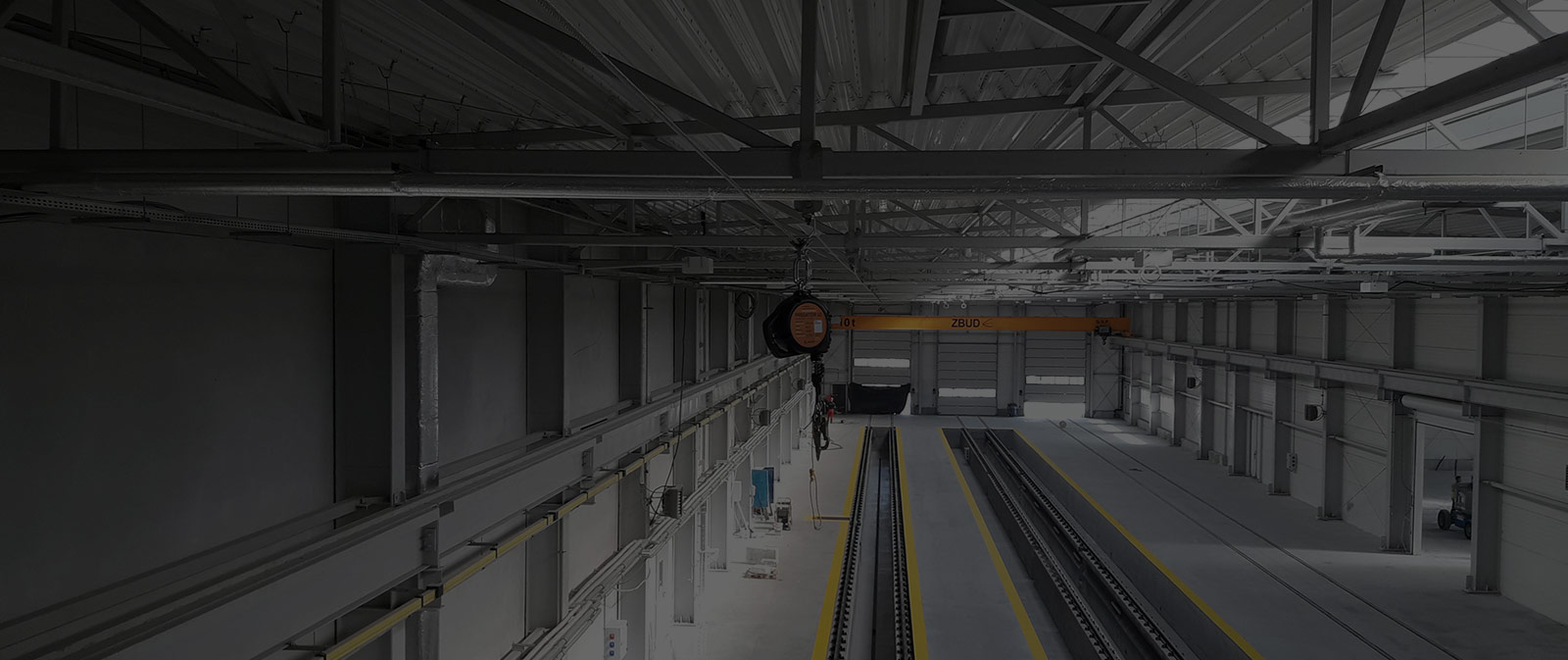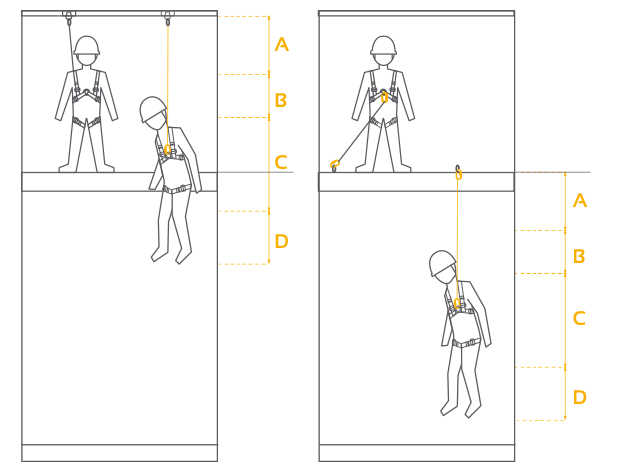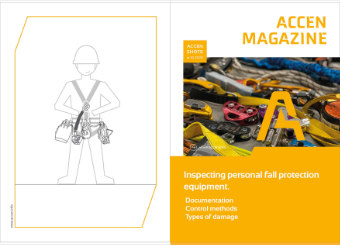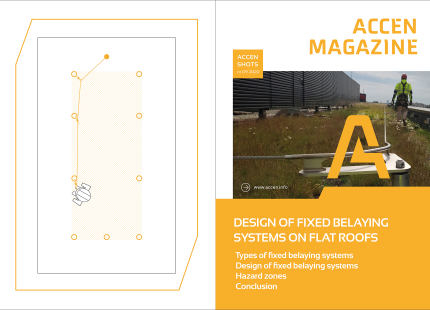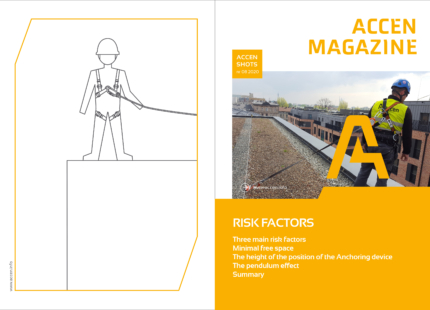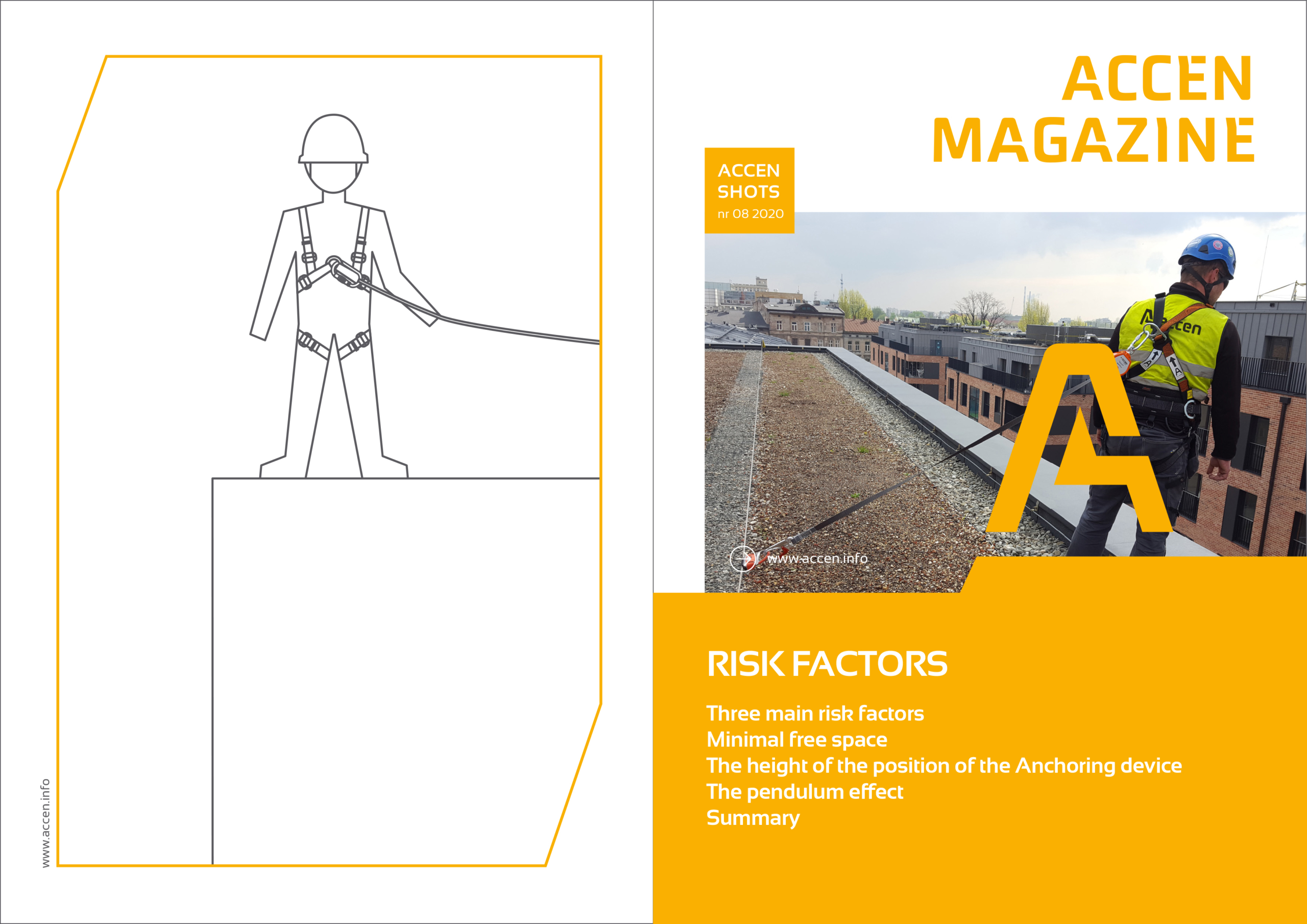
RISK FACTORS
The most commonly used type of systems, among personal protective equipment, are those designed to prevent falling from a height. They consist of three basic elements: a safety harness, a connecting and shock-absorbing component and an anchoring device. The purpose of such a system is to safely stop a falling person and mitigate the consequences of a sudden loss of speed.
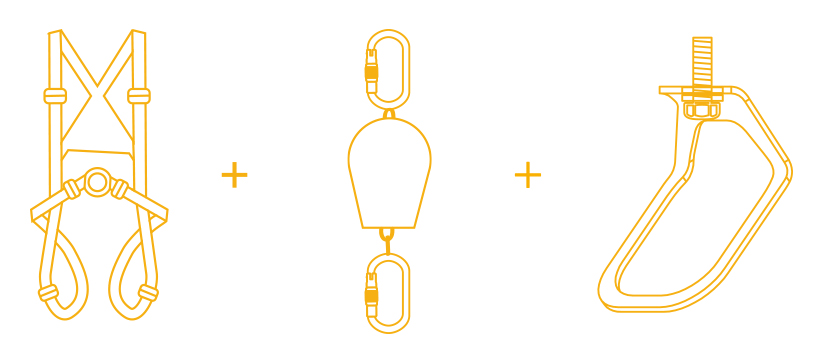
Full body harness + Connecting or connecting and damping subsystem + Anchoring subsystem (anchor device)
THREE MAIN RISK FACTORS
Apart from the numerous advantages of such systems, they also have serious disadvantages. The most important of them is allowing for a free fall, and consequently the need to stop a person from falling. The proper use of a personal fall protection system is an effective method of securing people working at height. However, the condition is to take into account the following risk factors:
- Minimum free space,
- Position of the anchoring device,
- Pendulum effect
These should always be taken into account when configuring a personal fall protection system so that it fulfills its purpose and provides the maximum level of safety for the user.
MINIMAL FREE SPACE
MINIMAL FREE SPACE is the distance that should be kept below the operating level for the protection equipment to function properly. When calculating the minimum distance under the workplace, the following should be taken into account: the position of the harness attachment point, the length of the connecting and shock-absorbing component along with its extension, the position (height) of the anchoring device, as well as the safe space under the user’s feet after the fall arrest.
- Free fall distance – length of the connecting and shock-absorbing component between the harness attachment point and the anchoring device.
- Fall arrest distance – the maximum length of a shock-absorbing component (e.g. a shock absorber) along with its elongation after a fall arrest.
- User height – the distance between the harness attachment point and the user’s feet.
- Safety factor – the minimum distance under the user’s feet after a fall arrest.
THE HEIGHT OF THE POSITION OF THE ANCHORING DEVICE
THE HEIGHT OF THE POSITION OF THE ANCHORING DEVICE, in relation to the user’s position (harness attachment point), significantly affects the length of the free fall path. Positioning the anchoring device over the worker will minimize the free fall path. On the other hand, attaching to the anchoring device below the working level will significantly increase the fall path and generate a dangerously high impact force generated during the fall arrest. Whenever possible, use (install) an anchoring device placed as high as possible.
The location of the anchoring device significantly influences the generated impact force during the fall arrest process itself, which affects the worker. The potential for such a fall can be assessed using the so-called fall-off factor, i.e. the ratio of the fall length to the active length of the connecting and shock-absorbing component for fall arrest.
It is calculated by dividing the fall height by the active length of the connecting and shock-absorbing component. The fall height is measured from the moment a person falls until the fall is stopped. The value of the factor depends on the height of the anchor point and ranges from 0 to 2. The lower the fall-off factor value, the lower the impact forces, and the higher the value, the greater the forces on both the worker and the entire fall arrest system, including the anchoring device. Determining the coefficient is a quick and simple way of determining the force of a fall, not an accurate measurement of the force of an impact.
THE PENDULUM EFFECT
THE PENDULUM EFFECT is a dangerous fall-off side effect consisting of the pendulum nature of the free fall, where there is a risk of hitting side obstacles. In this case, the worker moves both vertically and horizontally. Such situations occur when one is too far horizontally from the anchor device. The risk of a pendulum fall is very common on roofs in corner zones. The lack of an additional anchoring point, the so-called anti-pendulum point or its incorrect positioning increases the risk of a pendulum effect.
In many cases, the free fall path is unpredictable and therefore dangerous in its consequences. When a pendulum fall occurs, the risk of damaging the fall arresting equipment also increases, and the effect itself will only end after all swing energy has been lost.
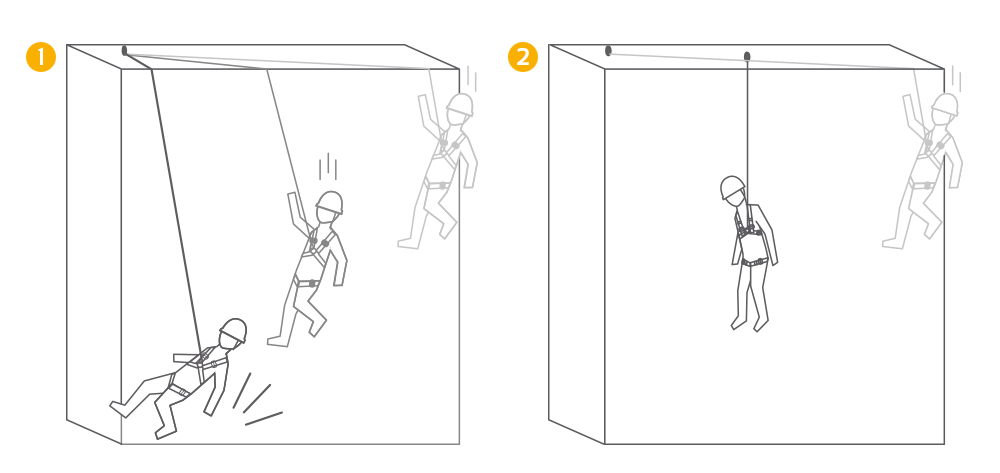
1. Pendulum effect when falling. No anti-swing anchor points.
2. The pendulum effect is neutralized thanks to the anti-swing anchoring point used.
Before starting work, as part of the risk assessment, it is always necessary to select the appropriate personal equipment that will form a fall protection system.
The configuration of the equipment should take into account the appropriate parameters of the components used for the type and nature of the work performed.
Please read and follow all information contained in the user manuals.


